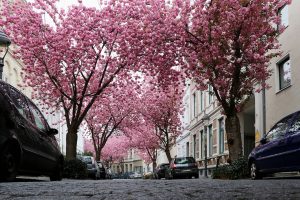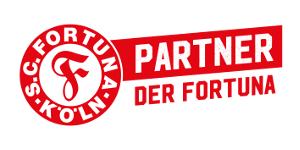Temporary Housing in Bonn
Many people associate Bonn with its history and with the fact that Bonn was the provisional federal capital from 1949 to 1990. Until 1999 Bonn was Germany’s seat of government. Bonn is one of the oldest cities in Germany and has a lot to offer. Not just the short distance to Cologne, makes Bonn attractive for its inhabitants. The beautiful city is located directly on the Rhine, between the “Siebengebirge” and the foothills of the “Eifel”. Bonn thus offers a perfect combination of nature, education and business. Besides the Friedrich-Wilhelm-University Bonn, which makes the city with its more than 371 buildings a university town, Bonn captivates with numerous museums, theatres, churches, monuments as well as ministries, embassies and many organisations of the United Nations (UN).
Popular districts and hotspots in Bonn
Bonn is divided into many, small and large city and town districts, which all come along with a unique charm. In order not to lose the overview, we present you here the most popular districts. Where can you stay beautifully, close to nature, student, cheap or especially exclusive? Below you will find information about the districts. The centre of Bonn (Bonn-Zentrum), Südstadt, Poppelsdorf, Altstadt, Castell, Bad Godesburg, Kessenich and Beuel.
Bonn Centre (Bonn-Zentrum)
The heart of town: Winding alleys with many shopping streets, many restaurants, bars and clubs, make up the centre of Bonn. In addition, the Electoral Palace is located here. That’s why this area is very popular among students. But also many business travellers spend their stay in furnished apartments directly in the city centre. Located next to the Rhine, north of the southern city, Bonn’s beautiful centre also offers excellent transport connections. The “Rhine promenade” invites one to stroll, while the city centre makes every shopping heart beat faster. Bonn-Zentrum also offers a varied cultural programme: For example a cinema, the opera and several beautiful public places.
Bonn & Beethoven
Especially the centre of Bonn, is associated with Beethoven by many people. No wonder, since here Beethoven was born – more precisely in the “Beethosengasse”, where also a museum is located. In honour of the famous composer, the Beethoven statue can be admired at the Münsterplatz. Adjacent to the Münsterplatz is the Beethovenhalle, which forms the northern end of the centre.
Südstadt
Villas looking like they were taken from a picture-book, green spaces and numerous restaurants: The Südstadt is located just before Poppelsdorf Castle and, together with the Weststadt, it forms the largest Wilhelminian quarter in Germany. Almost no house comes without turrets, bay windows or balconies. The stately houses, built between 1860 and the beginning of the First World War, are almost untouched by the war. Although the Südstadt is an expensive pavement, it impresses with a great quality of life, a lot of charm and a perfect location. Above all, students are drawn here – not least because of the proximity to the university facilities, but also because of Bonn’s city life. For example, Bonn University’s Hofgarten, where you can relax particularly well in summer, is part of the quality of life in Bonn’s Südstadt. Culturally, this district is characterised by the “Koenig” museum, the “Arithmeum” or the “Egyptian Museum”, just to name a few.
Poppelsdorf
Poppelsdorf is one of the most popular but also most expensive districts of Bonn. It borders on the Südstadt, Endenich and Kessenich and is located close to the centre. Here the castle of Poppelsdorf (“Poppelsdorf Schloss”) is located, which, like Kurfürsten Schloss, is used by the University of Bonn. The botanical garden is a nice place to relax and covers about eight hectares. The “Melbbad” is located at the “Venusberg “- the idyllic outdoor pool is very popular with young and also old people. But also the beer garden “Alter Zoll” invites you to linger and relax. The majority of inhabitants in Poppelsdorf are students. Around Poppelsdorfer Platz there are many cafés, bars, pubs and restaurants. All those who like to celebrate get their money’s worth in Poppelsdorf – and not only at the annual Poppelsdorfer Kirmes. This district offers a balanced mix of leisure, sights, nightlife and standard of living.
Altstadt
Bonn’s “Altstadt” is located in the north of Bonn (Nordstadt), about 1.4 kilometres from the Münsterplatz. In fact, it is not the historic old town, which was almost completely destroyed in the Second World War. Sounds a little misleading, but in the end the “new old town” is already 100 years old. The multicultural working-class district with numerous pretty alleys, small shops and ornate house fronts attracts many travellers every year. Short- and long-term living in this charming area is also very promising: there is a lot to discover in Bonn’s old town. Among others, the Women’s Museum (“Frauenmuseum”), the Bonn Art Association, the Artothek and the cultural centre “Kult 41”. The latter regularly organizes concerts, poetry slams, film evenings and interesting exhibitions. For all sports fans, the “Sportpark Nord”, located in the northern city, offers the best opportunity to let off steam. With over 160,000 square meters, it is the largest sports facility in Bonn.

Our tip: Make sure you visit “Kirschblüte Bonn” in spring – between the beginning and the end of April, Bonn’s old town turns into a pink colour spectacle. Especially in “Heestraße” and “Breite Straße” the cherry blossoms can be admired in their full splendour. Truly beautiful avenues invite you to take unique photos or just enjoy the view.
Castell
Following in the footsteps of Caesar, the Bonn-Castell district is strongly influenced by Roman history. This can already be read from the street names: The “Römerstraße”, the “Legionsweg” or the “Augustusring”. But also the actual district name, Castell, can be derived from the large Roman fort “castra bonnensia”, which once was located here.
Today, Castell is a popular place to live at for students. Not at least because parts of the university sports facility are located here, but also because the centre of Bonn is within walking distance. Sports enthusiasts (students), however, get their money’s worth. In addition to the university sports facility, Castell also has the “Römerbad” – a large open-air swimming pool with extensive lawns, large sports pools, diving platforms and a wave pool. Bonn-Castell is characterised by the urban life, a wide range of leisure activities and its proximity to the Rhine, making it one of Bonn’s most popular residential areas.
Bad Godesberg
Until 1969 Bad Godesberg was regarded as an independent city. Today Bad Godesberg has over 70,000 inhabitants and is thus the largest urban district in Bonn.
Spacious parks and many avenues make up this part of the city. Therefore many families are drawn to Bad Godesberg. But also the very good school offer for children and young people is one reason why young families move to Godesberg. Among others, the Kay International Kindergarten, the École Française de Gaulle-Adenauer and the Bonn International School (BIS) are located here. The B9 federal highway, which runs through the entire district, offers very good connections.
Cultural programme included in Bad Godesberg
These include especially the “Godesburg”, the landmark of the district and the “Redoute”, a ballroom from electoral times. Furthermore, the “Klangstation”, the “Kleine Beethovenhalle” or the “Godesberger Treff” offer a wide range of cultural activities. Film lovers will get their money’s worth at Kinopolis, Bonn’s largest cinema.
Bad Godesberg & Kessenich: Kids and grown-ups love it so? The happy world of Haribo.
Definitely. Although the legendary HARIBO factory has not been here since the beginning of 2018, the sugar-sweet bears will always be a part of Bonn’s history. The first factory was located in the district of Kessenich, then in the adjacent district of Dottendorf. Now the production of the gold bears was moved to “Rheinland-Pfalz” – to be more precise, to Grafschaft.
Tipp for all sweet teeth: However, the factory outlet is still in Bonn-Bad Godesberg – on Friesdorfer Str. 121. HARIBO bears, products from the MAOAM range, liquorice and even a self-mixing candy bar make the hearts of all those with a sweet tooth beat faster.
Kessenich
Just to tell you in advance: The district of Kessenich is iconic! Anyone who does not know this area should definitely pay him a visit. Above all, Kessenich became known – as already described in the section Bad Godesberg – by the first, there located manufactory of HARIBO. Kessenich pours on a village charm that speaks for itself: Many house facades are still listed and completed the pretty picture of Kessenich. A wide range of cultural and sporting activities, many green areas and the nearby Rhine make the district a unique oasis of well-being.The inhabitants of Kessenich are particularly proud of their district and like to show this. Kessenich has its own website, its own anthem, its own tea and even fan articles can be bought. With the saying “Ming Hätz is Kessnich” (English: “My heart beats for Kessenich”), the people of Kessenich express their attachment to their district.
Beuel
When it comes to Bonn-Beuel, this is the parting of the ways. For some, the Beuel district on the right bank of the Rhine is the sunny side of the city, for others it is rather the “Schäl Sick”, i.e. the worse side. Most of the district is located at the level of the city centre and is connected to Bonn on the left bank of the Rhine by the Kennedy Bridge. Beuel is therefore only a hop away from the centre of Bonn. Bonn-Beuel offers a wide range of leisure activities, many green areas along the banks of the Rhine and around Beuel, as well as a wide variety of cultural activities. Beuel’s more than 66,000 inhabitants appreciate this. The peripheral areas around Beuel are characterised by green meadows and forests and invite you to relax and take a walk. The Siebengebierge with the famous Drachenfels and the famous Petersberg are popular excursion destinations that can be reached quickly from Beuel. The heart of the district, on the other hand, radiates an urban atmosphere – here you will find numerous grocery stores, restaurants, boutiques and shopping facilities. Many people spend their leisure time on the nearby banks of the Rhine. Sports, barbecues, relaxation, etc. – the long banks of the Rhine are perfect for this. A clear advantage of the right bank of the Rhine is that it is usually quieter here than on the opposite side.
More leisure tips:
- If you like going to the cinema, you should definitely visit the Beuel film stage. This cinema offers an unusual programme far from the mainstream.
- The Junge Theater Bonn, on the other hand, is one of the most successful children’s- and youth theatres – it is located on Hermannstraße and is definitely worth a visit.
- At the cultural centre, the Bonn Bread Factory (“Bonner Brotfabrik”), a programme of theatre, dance, music and film can be enjoyed in over 900 events every year. In addition, “the Brotfabrik” offers courses and workshops for adults as well as children and rooms can also be rented here for private usage.







